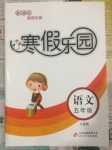题目内容
Believe it or not, optical illusion(错觉) can cut highway crashes.
Japan is a case in point. It has reduced automobile crashes on some roads by nearly 75 percent using a simple optical illusion. But stripes, called chevrons(人字形), painted on the roads make drivers think that they are driving faster than they really are, and thus drivers slow down.
Now the American Automobile Association Foundation(基金会) for Traffic Safety in Washington D.C. is planning to repeat Japan’s success. Starting next year, the foundation will paint chevrons and other patterns of stripes on selected roads around the country to test how well the patterns reduce highway crashes.
Excessive (too great) speed plays a major role in as much as one fifth of all fatal traffic accidents, according to the foundation. To help reduce those accidents, the foundation will conduct its tests in areas where speed-related hazards (danger) are the greatest curves, exit slopes, traffic circles, and bridges.
Some studies suggest that straight, horizontal bars painted across roads can initially cut the average speed of drivers in half. However, traffic often returns to full speed within months as drivers become used to seeing the painted bars.
Chevrons, scientists say, not only give drivers the impression that they are driving faster than they really are but also make a lane appear to be narrower. The result is a longer lasting reduction in highway speed and the number of traffic accidents.
1. The passage mainly discusses ________.
A. a new way of highway speed control
B. a new pattern for painting highways
C. a new way of training drivers
D. a new type of optical illusion
2. On roads painted with chevrons, drivers tend to feel that ________.
A. they should avoid speed-related hazards
B. they are driving in the wrong lane
C. they should slow down their speed
D. they are coming near to the speed limit
3. The advantage of chevrons over straight, horizontal bars is that the former ________.
A. can keep drivers awake B. can cut road accidents in half
C. will look more attractive D. will have a longer effect on drivers
4. The American Automobile Association Foundation for Traffic Safety plans to ________.
A. try out the Japanese method in certain areas
B. change the road signs across the country
C. replace straight, horizontal bars with chevrons
D. repeat the Japanese road patterns
5. What does the author say about straight, horizontal bars painted across roads?
A. They are suitable only on broad roads.
B. They are falling out of use in the United States.
C. They are ignored in a long period of time.
D. They cannot be used successfully to traffic circles.
1--5 ACDAC
解析:
为了控制车速,减少交通事故,美国决定在公路上画人字形标志。
1. A。主旨题。通读全文,我们可以知道,在高速公路上画各种线是为了让司机觉得车速过快,从而达到控制车速的目的。
2. C。细节题。由But stripes, called chevrons (人字形), painted on the roads make drivers think that they are driving faster than they really are, and thus drivers slow down.可知C项正确。
3. D。推断题。由最后两段对比可知,人字形线比直线、平等线对控制车速有更长久的影响。
4. A。细节题。 根据paint chevrons and other patterns of stripes on selected roads around the country,可知他们在精心挑选的几条路上试验日本的模式。
5. C。推断题。根据 However, traffic often returns to full speed within months as drivers become used to seeing the painted bars 可知。

 寒假乐园北京教育出版社系列答案
寒假乐园北京教育出版社系列答案